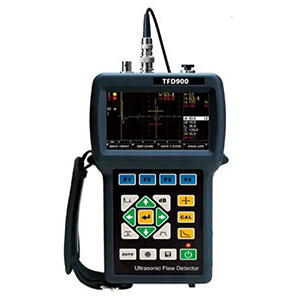We use cookies to enhance your experience.By continuing to browse this site you agree to our use of cookies.More information.
Flaw detection is the most commonly used technique in all applications of industrial ultrasonic testing.Typically, high frequency sound waves are reflected from the defect and produce a clear echo pattern.
Portable instruments record and display these echo patterns.Ultrasonic testing is a safe inspection method used in a wide variety of service industries and production processes, especially in applications using welds and structural metals.This paper provides an overview of the theory, practice and application of ultrasonic flaw detection.
Sound waves are mechanical vibrations that pass through a medium such as a liquid, solid, or gas.These waves travel through the medium in the desired direction at a specific speed.When these waves hit boundaries with different media, they are transmitted back.This is the principle behind ultrasonic flaw detection.
Most ultrasonic testing applications use frequencies between 500 KHz and 10 MHz per second.At frequencies in the megahertz range, sound energy travels easily through the most common materials and liquids, but not efficiently through air or similar gases.Also, different types of sound waves travel at different speeds.
Also, wavelength refers to the distance between two subsequent points in the wave cycle as it travels through the medium.It has to do with speed and frequency.In ultrasonic flaw detection and ultrasonic thickness measurement, the minimum detection limit is one-half wavelength, and the minimum measurable thickness is one wavelength.
In solids, sound waves can exist in different modes of propagation, characterized by the type of motion involved.The commonly used modes of ultrasonic flaw detection are transverse wave and longitudinal wave.
Hard and homogeneous materials reflect sound waves more efficiently than soft, heterogeneous or granular materials.Three factors, beam spread, attenuation, and scattering, control the distance a sound wave travels in a particular medium.
The magnitude of the reflection coefficient or reflected energy is related to the relative acoustic resistance of the two materials.In ultrasonic flaw detection applications, it is common to see metal and air boundaries where the reflection coefficient reaches 100%.This is the basic principle involved in ultrasonic flaw detection.
At ultrasonic frequencies, the sound energy is extremely directional, and the sound beam used for flaw detection has a well-defined definition.According to Snell’s law of refraction, the sound energy transmitted from one material to another bends.A beam traveling in a straight line will travel in a straight direction; however, a beam hitting the boundary at an angle will bend.
A transducer is an instrument capable of converting energy from one state to another.Ultrasonic transducers can convert electrical energy into sound energy and vice versa.
For ultrasonic flaw detection, standard transducers use active elements made of polymers, composites, or piezoelectric ceramics.When a high-voltage electrical pulse is applied to the element, it vibrates and generates sound waves in a specific spectral range.When incoming sound waves vibrate this element, it generates an electrical pulse.
In flaw detection applications, five types of ultrasonic transducers are commonly used.They include contact transducers, immersion transducers, delay line transducers, angular beam transducers and dual element transducers.
A trained operator can identify specific echo patterns associated with echo responses from representative defective and good parts.This can be done by using the correct reference standards and recognized testing procedures and a good knowledge of sound wave propagation.Ultrasonic flaw detection adopts two calibration standards: direct beam flaw detection and oblique beam flaw detection.The latter technique is often used for weld inspection.
Ultrasonic flaw detection is a comparative method.While some analog-based flaw detectors are still in production, most modern instruments employ digital signal processing to improve stability and accuracy.
Post time: Feb-14-2022

